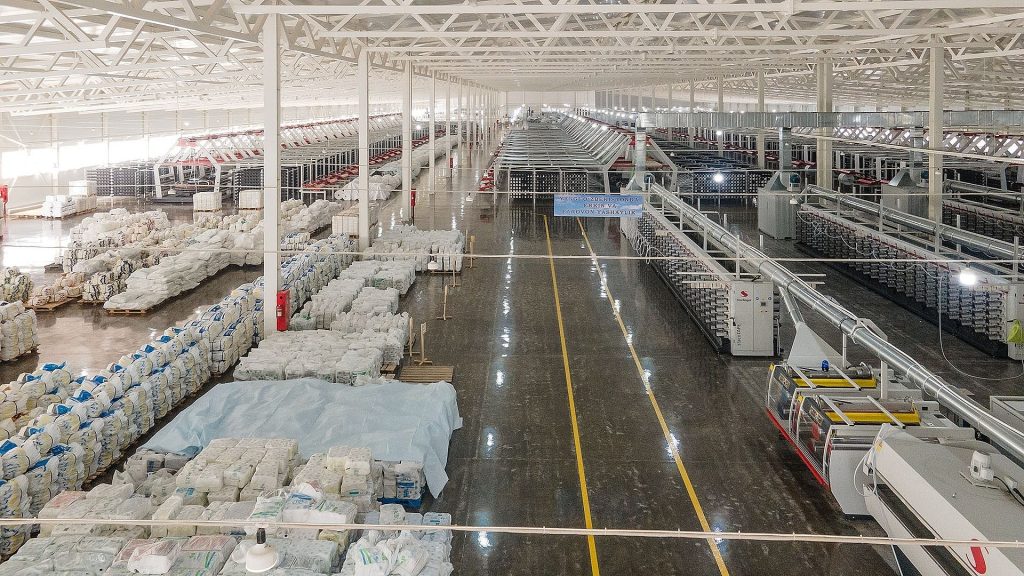
“Why are printed BOPP woven bags becoming the preferred packaging solution for global feed producers?”
This question echoes across the agriculture and livestock industries. The answer lies in their unique combination of cost efficiency, durability, and branding versatility—positioning BOPP woven bags as both functional workhorses and strategic marketing tools in feed packaging.
At VidePak, a global leader in woven bag manufacturing since 2008, these bags are engineered to meet the rigorous demands of pet feed, poultry, and livestock industries. With 526 employees, $80 million annual revenue, and Austrian Starlinger technology, the company delivers solutions that balance performance, compliance, and aesthetic appeal.
1. Application Advantages in Feed Packaging
1.1 Cost Efficiency and Load-Bearing Capacity
VidePak’s BOPP woven bags, made from 100% virgin polypropylene (PP), offer tensile strengths of 10–12 N/m², capable of carrying 5–50 kg loads without tearing. For example, a Brazilian poultry feed supplier reduced transport losses by 18% after switching to VidePak’s double-stitched block-bottom bags, which withstand pneumatic conveying stresses .
Key cost-saving features:
- Reusability: Bags endure 3–5 transport cycles, reducing per-unit costs by 30%.
- Lightweight design: At 90–120 GSM, they cut shipping costs by 15% compared to traditional jute bags .
1.2 Safety and Hygiene
BOPP’s non-porous surface, enhanced by PE lamination, resists bacterial growth and moisture ingress. A 2024 study showed VidePak’s anti-microbial coated bags reduced mold contamination in cattle feed by 72% in humid Southeast Asian climates .
1.3 Breathability and Customization
Controlled porosity (12–14 threads/cm²) prevents condensation, critical for poultry feed. VidePak’s ventilated gusset bags are used by a U.S. pet food brand to maintain kibble crispness during transatlantic shipping .
2. Global Market Dynamics and Branding Strategies
2.1 Market Growth and Regional Trends
The global feed packaging market, valued at $12.3 billion in 2024, is projected to grow at 5.8% CAGR, driven by Asia-Pacific’s aquaculture boom. VidePak’s kraft paper composite bags dominate Vietnam’s shrimp feed sector, where moisture resistance is critical .
2.2 Branding Through Advanced Printing
VidePak’s 8-color flexographic printing supports Pantone, CMYK, and RAL systems, enabling photorealistic branding. A European organic feed producer reported a 27% sales increase after adopting bags with QR codes for traceability and USDA-certified ink .
Case Study:
A Japanese poultry brand used metallic foil accents on BOPP bags to differentiate premium products, achieving a 22% shelf-space expansion in supermarkets .
3. Parameter Selection Guide for Feed Producers
3.1 Thickness and Grammage
| Feed Type | Recommended GSM | Thickness (mm) | Rationale |
|---|---|---|---|
| Pet Feed (5–20 kg) | 90–100 | 0.18–0.20 | Balances cost and puncture resistance |
| Livestock Feed (25–50 kg) | 110–120 | 0.22–0.25 | Withstands stacking up to 8 pallets |
3.2 Lamination and Inner Liners
- PE-coated bags: Essential for tropical climates (e.g., Thailand’s monsoon season) to block humidity .
- Integrated inner liners: Used for hygroscopic feeds like molasses-based poultry supplements to prevent clumping .
4. VidePak’s Competitive Edge: Technology and Compliance
4.1 Starlinger Automation
VidePak’s AD*Star looms produce 200 bags/minute with ±0.2 mm precision, reducing material waste by 12%. A Saudi livestock client achieved 25% faster palletization using pre-printed valve bags compatible with robotic arms .
4.2 Regulatory Adherence
All bags comply with:
- FDA 21 CFR: Safe for direct contact with organic feed.
- EU REACH: Phthalate-free inks and adhesives .
5. FAQs: Addressing Critical Concerns
Q: How do I choose between laminated and non-laminated bags?
A: Opt for lamination in humid regions (>70% RH) to prevent mold. Non-laminated bags suit dry climates and reduce costs by 15% .
Q: Can BOPP bags withstand freezer storage?
A: Yes. VidePak’s low-temperature PP resin maintains flexibility at -30°C, ideal for frozen fish feed .
Q: What’s the ROI of custom printing?
A: Brands typically recover costs within 6 months via reduced counterfeit incidents and shelf appeal .
6. Future Trends: Smart Packaging and Sustainability
VidePak is piloting biodegradable PLA coatings (90% compostable by 2026) and NFC-enabled bags for real-time feed quality monitoring. These innovations align with the EU’s Circular Economy Action Plan, targeting 50% recycled content by 2030 .
Conclusion
Printed BOPP woven bags are transformative tools for feed producers navigating cost, compliance, and branding challenges. VidePak’s fusion of Austrian engineering, regulatory expertise, and customization agility positions it as the partner of choice in a $12.3 billion market poised for explosive growth.
External Resources:
- Discover how BOPP laminated woven bags enhance branding in competitive markets.
- Explore precision printing techniques for durable, high-impact designs.